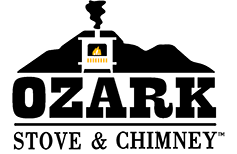Chimney Inspections: Book This Annual Service With Ozark Stove & Chimney
A chill in the air, a book in your hand, the dog cuddled up at your feet, the whole family gathered in one room… all this made possible by the warm glow beginning in your fireplace. We love a good home fire as much as the next person, but only if it’s been properly inspected by a Chimney Safety Institute of America (CSIA)-certified sweep.
Fortunately, for homeowners in the Greene County, MO, Benton County, AR, or anywhere else in Southwest Missouri or Northwest Arkansas, Ozark Stove & Chimney is the place to call for all your chimney care needs. Scheduling with us is easier than ever – you can submit a form right here on the website or give us a call at 417-201-6585. Either way, we’d love to learn how we can help you enjoy your chimney – and, by proxy, your home – by ensuring it is well-maintained and thus safe to use.
What Is a Chimney Inspection?
Different from a chimney sweeping (or, as some call it, a cleaning), a chimney inspection is to a chimney as a physical examination is to a person. This is to say that both are designed as a general check in to make sure everything is functioning optimally and with no issues in sight.
During a physical, your doctor might perform specific diagnostic tests or ask you a series of questions to get a better idea of your overall health to ensure that all of your parts are operating at your best and healthiest. It might seem like a silly comparison, but when one of our professionally trained technicians comes out to your home to perform an inspection, they are essentially doing the same for your chimney system – making sure all is well and good and safe, so that you can enjoy your fireplace with peace of mind.
And, just like in an annual check-up with your physician, if a chimney sweep finds something to be slightly amiss during your yearly inspection, they are able to diagnose any issues or potential problems. That way, you can schedule a later service to get them taken care of before utilizing your fireplace and chimney in the colder months.
What Does a Chimney Inspection Entail?
This ultimately depends on the type of inspection that is being performed. Basically, regardless of the level of chimney inspection, the process involves a chimney sweep analyzing various parts and places of your system to check for any leaks, cracks, debris, substance buildup, etc. and looking for any problematic areas that might affect the efficiency and overall performance of your chimney.
Now, depending on your specific circumstances, you’ll require either a level 1, 2, or 3 inspection. What does each entail?
Level 1 Inspection
- What is it? A level 1 inspection is considered the minimum level of maintenance for an appliance that has had no recent changes or modifications, and that you plan to use regularly – just as you have in the past.
- What happens? Under this classification, a technician will inspect all readily accessible (which is to say, exposed or the potential to access without use of any tools to remove doors, coverings, and panels) parts of your chimney – both on the interior and exterior. A chimney sweep looks for any obstructions or debris in the flue liner, as well as examines the general structure and the installation/connection points to ensure all is clear, clean, and set up for success.
Level 2 Inspection
- What is it? A level 2 chimney inspection is meant to be performed after the installation of any new parts or after any changes have occurred to your chimney system. These changes can be anything from switching the type of fuel utilized in a fireplace, putting the liner through any shape/material adjustments or upgrades, or adding any other additions/replacements to your chimney. This is also the required inspection when property is sold or transferred and after a chimney repair service/maintenance or replacement of a previously damaged appliance.
- What happens? This level of inspection is essentially a slightly more in-depth version of a level 1 overview. While the former, “simpler” inspection requires the evaluation of the obviously visible internal and external structures, a level 2 chimney inspection also examines the internal structure through the means of a camera. This level also requires sweeps to check on slightly less accessible parts (i.e. ones where they will have to remove certain doors, panels, and coverings in order to access) of the system.
Level 3 Inspection
- What is it? As it is in most cases, a level 3 chimney inspection is the last line of defense when it has been determined (through either a level 1 or 2 inspection) that there is a potential hazardous issue found deeper inside the system.
- What happens? Much like the first two levels, a level 3 inspection includes the investigation of the visible interior and exterior components of the system. This level goes one step further, however, and requires the chimney technician to remove certain parts (like the crown or other internal pieces, resulting in eventual reconstruction) in order to get a better look at the inner workings of the system.
How Often Do You Need To Get Your Chimney Inspected?
We lightly touched on this already, but at a minimum you should be getting your chimney inspected once a year. Not only is this required by the National Fire Protection Association (NFPA), but it ultimately saves you time and money in the future.
For example, let’s say your chimney has a few moderately severe cracks in your flue liner – often a result of age and normal wear and tear. As a homeowner who only uses your fireplace every so often, there is no real reason you’d know about this, especially because it is not visible or easily accessible.
Another scenario? The cold season is on its way and you want to check the effectiveness of your chimney by lighting a small fire. …only to have it sputter and spark before it eventually extinguishes to embers. You call a chimney sweep (ideally one from Ozark Stove & Chimney if you live in the Southwest Missouri or Northwest Arkansas areas) to investigate your system, and they inform you of the internal damage and the risk you pose of using your fireplace in its current condition.
If sweeps are about to enter their busy season, schedules can be challenging to correlate, which is frustrating when all you want to do is utilize your chimney system. It’s all just a major nuisance. Save yourself the headache, and schedule your chimney cleaning and inspection before it’s an issue – well in advance of when you anticipate you’d be using it most.
Due for a sweep? Call 417-201-6585 or book online today.
How Often Should Homeowners Check Their Chimney?
Remember that an inspection is required after any previous damage has been repaired or replaced, when any new additions have been made to your existing chimney structure, and when you move into a new home. To the last point, it is important to note that a chimney-specific inspection is different from the blanket real estate inspection required in the homebuying process. While the latter will evaluate the basic functioning points of your chimney, the inspection will not be as comprehensive with regard to the precise details.
When it comes to general maintenance and good practice, however, it also doesn’t hurt to give your firebox (and the other surrounding parts of your chimney system) a little once over before you light a fire each time; this just encourages you to be diligent and aware of any small changes that might occur.
What Should I Inspect My Chimney For? Is There a Standard Chimney Inspection Checklist?
Yes… and no. This is where the type of inspection you’re getting comes in. As we learned in previous sections, the three levels of inspection all build on each other, so there is a basic checklist that is followed from one level to the next – just in increasing complexity at every stage.
Keep in mind that some chimney sweeps have a different process than others, but generally speaking, every level of inspection should involve some semblance of the following procedures:
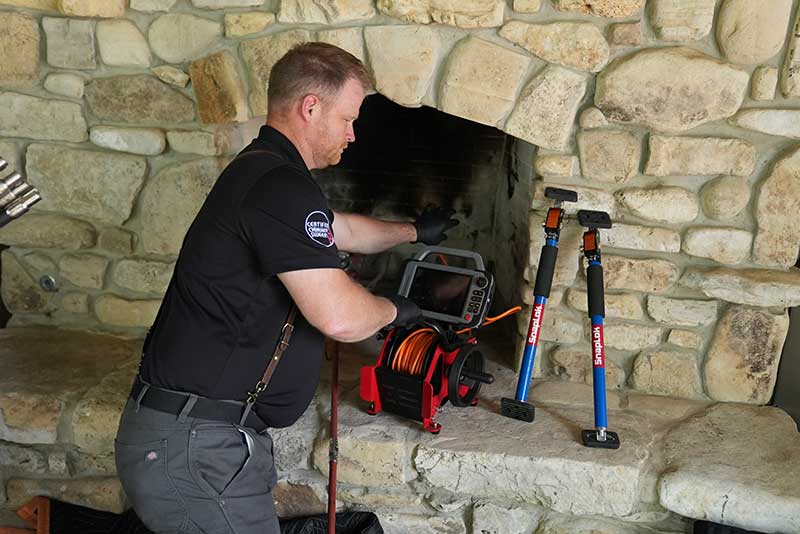
- Investigate the flashing to ensure there are no cracks or leaks that could allow water to permeate through the barriers. A sweep might need to also check the attic for signs of water damage.
- Inspect the chimney cap for signs of damage, corrosion, or degradation, as well as make sure that it is still properly sealed.
- Check out the state of your bricks and mortar to verify that they are still in strong working order. Depending on the age of your chimney, as well as your history with its maintenance, it is possible for both the bricks and the mortar to be cracking and deteriorating – which will only cause inefficiencies and more harm in the long run. A chimney sweep may need to check these on both the inside and outside of your chimney.
- Look for animals (or traces of them) that may have found their way into your chimney and decided to stay. Certainly better to check for them before it gets colder and you’re looking to spark up a fire instead of learning you had house guests after that first fire, right?
- Check the flue and its liner for any internal damage like soot buildup (also known as creosote) and cracks or deterioration of the liner. (In a level 1, this step will be less elaborate than levels 2 or 3 since it does not require the technician to remove any panels, doors, or coverings).
- Verify that the damper is working properly so that the chimney has the ability to be properly closed when not in use. This prevents damage to the system, as well as dust and other materials from blowing back into a house.
- Inspect the firebox and surrounding area for any damaged or cracking bricks and mortar.
Does Chimney Type Matter? How Do You Inspect a Brick Chimney?
Though the actual inspection process and procedure(s) depend on the overall structural makeup of the system – and thus might look different from chimney to chimney – all inspections should roughly cover the same bases. However, depending on the material, a chimney sweep will be looking for different things.
For instance, with a brick chimney structure, the technician must closely examine the integrity of the bricks and mortar in order to determine whether or not the chimney requires tuckpointing or brick replacement services. With regard to a prefabricated (prefab) chimney, however, in an annual inspection the chimney sweep will check out the state of the refractory panels (the imitation bricks found within the firebox) and ensure that the metal flue has retained its proper shape and has not been warped by excessively hot fires.
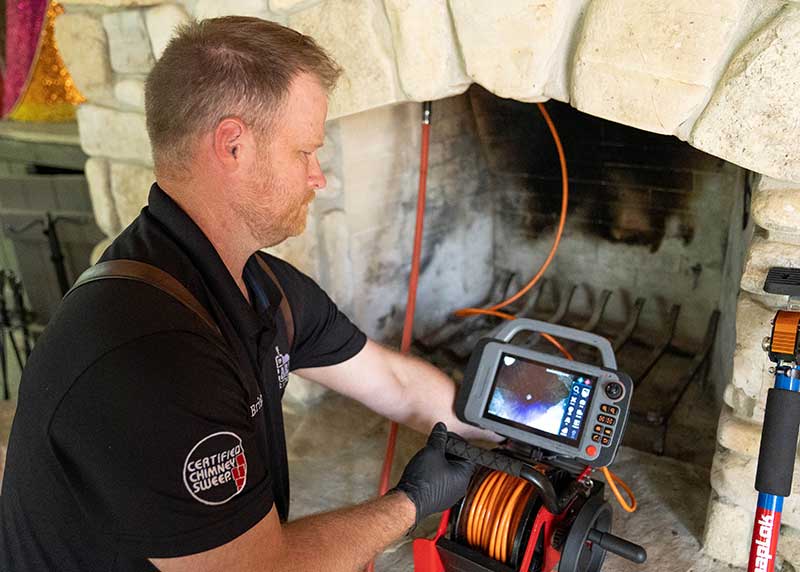
Do I Need To Schedule A Chimney Inspection Even if I Don’t Use My Chimney?
Considering you are here and reading this page, we think you probably have a hunch as to that answer. But, yes. It is a common misconception that just because you don’t regularly use your chimney means you automatically get a free “pass Go and collect $200” card.
This is simply not true. (If only real life worked like Monopoly…) While an unused chimney system might be free from scorch marks, excessive soot, creosote buildup, and other well-worn signs of regular, fire-burning activity, that does not mean there aren’t things that could still be wrong – or on the verge of being wrong – within the appliance.
- If we’ve said it once, we’ve said it a bunch, but it is all too common for little critters to squeeze and crawl into tight, dark places. What better place than a chimney that does not smell of ash and flames and gas to establish a new home?
- Water, leaves, and other debris brought by mother nature’s many moods have a special talent for weaving into places and spaces in which they do not belong. And then, depending on how long they’re left to melt/congeal/seep, they can wreak havoc on the exposed part of your chimney. It’s kind of like when you wash a pair of pants with a piece of gum in them – you didn’t even chew the gum and now you’re forced to clean up after it anyway.
- Natural wear and tear. It happens to us all, right? We never think we need our hamstrings to be all that flexible until we bend to pick something up off the ground and, suddenly, we’re all too aware of the tightness. The same (well, theoretically, anyway) is true for your chimney. Over time, the materials can deteriorate naturally which, if you ever then do decide to use your system, you’re putting yourself and your home in danger.
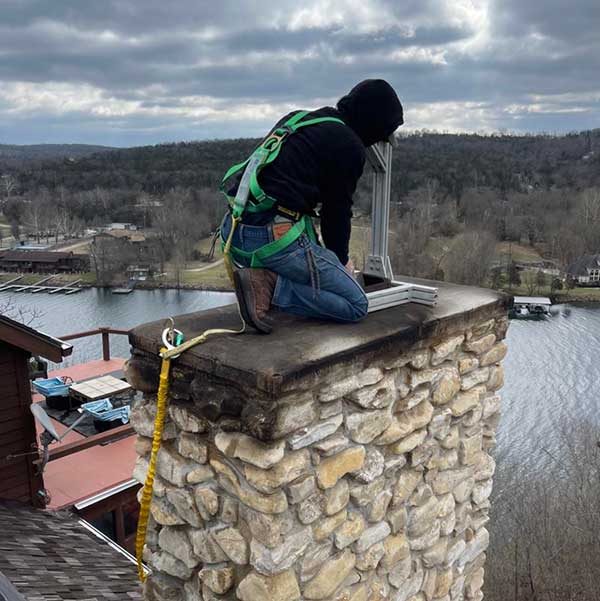
What Are the Parts of My Chimney? Why Do I Need To Know Them?
In order to fully understand your chimney system and why it is important to schedule annual chimney inspections, it might be helpful to learn a bit more about the makeup of the appliance itself. While chimneys can vary slightly (brick masonry or prefabricated, gas or wood-burning, etc.), for the most part they all contain the following elements that work in tandem with each other to create an efficient system.
- Firebox: This is the part most chimney-owners are familiar with – the part where your fire actually sits. Because it comes into direct contact with the fire’s flames, it must be made of a material strong enough to withstand that heat.
- Smoke Shelf: As the name suggests, the smoke shelf is a small ledge located inside the structure between the firebox and smoke chamber which helps to prevent downdrafts, as well as keep outside debris from reaching the firebox.
- Damper: The function of which is to seal your chimney when it’s not in use, the damper is a manual mechanism that sits on the end of the smoke shelf and is controlled by a lever usually found in the top of your firebox.
- Smoke Chamber: This refers to the area in between the firebox and the flue. It’s shaped like an upside-down funnel, and it helps to funnel the smoke from your fire, so it can effectively rise up to your flue without backdrafting or increasing buildup.
- Flue/Chimney Liner: Commonly interchanged, the chimney flue is the inside opening space starting just above the smoke chamber and “ending” where the chimney meets the open air with a cap. The flue liner is the material lining the inner walls of your chimney and thus, by proxy, the flue itself. Depending on the style and design of your chimney, the liner might be made of different materials and may also vary slightly in shape.
- Flashing: Comprised of a few different materials (primarily metals), the flashing is a waterproof seal of sorts that is found at the junction where the chimney meets the roof. This piece is vital for protecting both your chimney and your home from moisture penetration and leaks.
- Crown: The chimney crown is the cement shelf-like structure found at the top of the system. Acting as a barrier (and in many cases, a sort of umbrella), its job is to protect the bricks and mortar from direct contact with rain.
- Cap: Sitting at the very top of your chimney, right above the crown, is the chimney cap. Regardless of the type of chimney you have, thanks to its design, a chimney cap helps to seal off the flue from debris and small animals, while still providing an escape route for the smoke.
There is, of course, so much more that goes into the construction and maintenance of your chimney, but these are the most important elements that you, the homeowner, should know and understand. As for the rest of the structure, all the odds and ends that go into the building and inspecting and sweeping process should be handled by a professional. Give us a call or reach out online to see what Ozark Stove & Chimney can do for your home.
How Do I Know if My Chimney Is Safe To Use?
Honestly, that’s a tough one because in many cases, you don’t. Sure, there are the obvious signs of needed maintenance, like extreme soot buildup, layers of creosote caking the walls of the firebox, visible cracks and crumbling mortar in the bricks and joints within the hearth, and more.
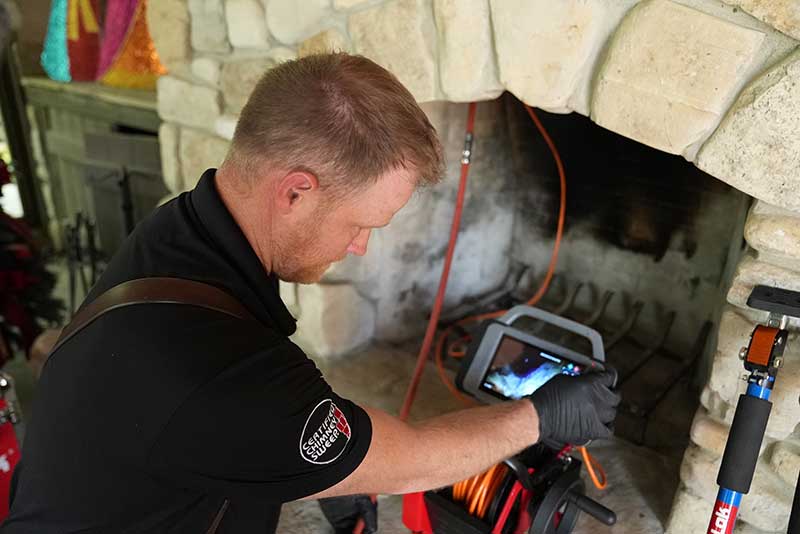
However, there are also a ton of instances where the only way you would know something was wrong or off is after your chimney has been inspected from the inside out by a professional. Just like with the hypothetical example of a family only realizing something was wrong after they tried using their chimney/fireplace system, much of what can be damaged, and thus dangerous, about a chimney, lies within the walls.
But that’s why we’re here – to perform the routine maintenance that keeps your chimney not only functional, but operating in tip-top shape. We provide the best chimney and stove services for homes across southwest Missouri and northwest Arkansas. Give us a call or book online to learn more or schedule an appointment today.
How Do You Inspect Your Chimney Yourself?
This, friends, is a trick question because the answer is: you do not. Seemingly simple in structure and function, chimneys are actually deceivingly complex and dangerous when you don’t know the ins and outs of the system. Luckily, here at Ozark Stove & Chimney, we do. We are professionally trained to do the dirty (and, believe us, it gets quite dirty) work and ensure everything is in optimal, functional condition.
Ready To Schedule Your Chimney Inspection? Reach Out, Today!
To learn more about chimney inspection costs, how often a chimney really needs to be cleaned, and if chimney sweeps are “worth it” (we are!), give us a call at 417-201-6585 or schedule one of our many services online. We’re the best of the best when it comes to the chimney and stove industries – that’s why we have many five-star ratings from our customers.
If you’re a homeowner in Greene County, MO, Benton County, AR, or anywhere else in our wide service area, you can trust Ozark Stove & Chimney for all your chimney needs. Book with us today!
We can take care of your leaky chimney repair to make sure your home and chimney stay dry. And don’t forget to schedule your chimney sweeping too.
